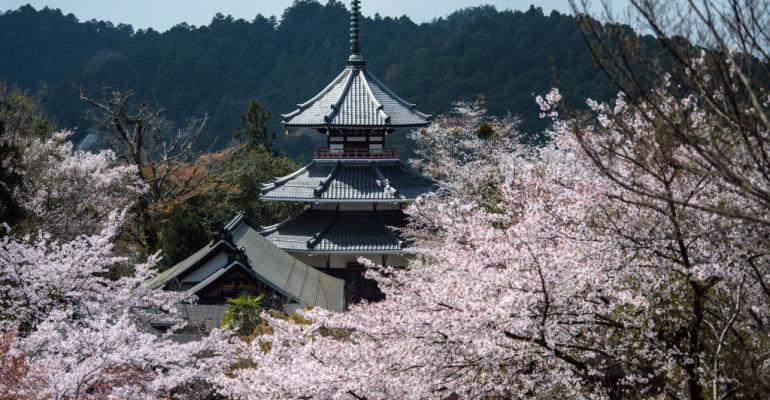On November 2, the Marriott Marquis in New York held a training session for more than a hundred department heads and managers to prepare them for an incentive group from Japan later this month. Preparations for the more than 2,000 visitors have also included cultural education for smaller groups during morning meetings, changes to food offerings and signage, and some additional F&B purchases including Japanese (not Chinese) chopsticks.
As part of the training, Terri Morrison, author of Kiss, Bow, or Shake Hands, and Seema Jain, Marriott International’s director of multicultural affairs, gave a presentation on ways to avoid making the group uncomfortable. Here are some of the things meeting planners should know in order to make Japanese visitors feel welcome in America.
By the Numbers
The Japanese, like the rest of the world, use the metric system, so giving directions in meters instead of feet would be helpful. They also write dates in a different order: year first, then the month, then the day. Example: 18/11/6 in Japan is November 6, 2018.
In America, the number 13 has negative connotations for superstitious people; in Japan, four is the number to avoid. Eight is a lucky number, so keep this in mind when assigning meeting rooms. Also, executives should always be housed on higher floors than less senior staff.
Body Language
It is considered rude when sitting down to show the sole of your shoe, so cross legs at the ankle. In conversation, Japanese people prefer not to make constant eye contact and will often stare at the bridge of the other person’s nose.
Card Choreography
Allocate enough time during a meet and greet to properly exchange cards, as it can take several minutes for each person being introduced. During a formal introduction, stand at least three feet away and bow, then present your business card using both hands. The business card should face the recipient so that it can be read easily. When you are presented with a business card, accept it beneath your own card, and don’t put it away in a desk or pocket until the introduction is over and the person has left the room. Never write on a business card; it is considered disrespectful.
Communication
Just like other international travelers, many Japanese people abroad use WhatsApp because it is an inexpensive way to text. Setting up a group chat with your guests will give them a quick way to ask questions and set appointments. In conversation, your visitors will be comfortable during silences, so don’t feel the need to fill natural pauses in conversation. A pause or gap, known as a “ma” in Japanese, is common in that culture. Your guests may also ask questions that Westerners do not typically ask, such as asking your age or marital status. If you are not comfortable answering, it is acceptable to change the topic.
Seema and Morrison arranged an interesting demonstration to show how hard simultaneous translation can be. They wrote the names of colors on a board but used different markers so that the color red was written in green, and purple was written in yellow, etc. Then they asked one of the trainees present to read out the colors the words were written in. The volunteer found it extremely difficult and would accidentally read the word because the exercise makes both sides of the brain compete with each other. The presenters' point: Interpreters should not be used for more than two hours without a break so that they don’t become too drained to pick up on nuances. Another tip: Allow members of the group who do speak English to enjoy their trip rather than having to speak for everyone.
Keep It in the Family
In business, family connections are extremely important. According to Morrison, 90 percent of the 81,000 adoptions in Japan in 2011 were of adult men because companies sometimes adopt successful CEOs to keep them in the family.
Food for Thought
Chopstick placement can be symbolic of many things. It is important not to serve rice with two chopsticks sticking up in the bowl because this is a symbol of death. Don’t pass food between sets of chopsticks because Japanese people honor their ancestors by ritually passing bones this way. When you do sit down to eat, pour soy sauce for your neighbor, and let her pour for you.
Morrison ended the training session by saying that an open mind and a welcoming attitude will go a long way with other cultures, and finished with a famous quote from Socrates: "I am not an Athenian or a Greek, but a citizen of the world."






